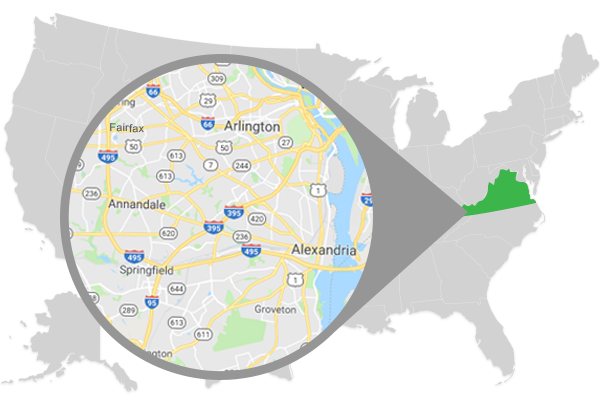Raccoons are some of the most common animals to make their way into homeowners’ attics. This occurs particularly frequently immediately after raccoon mating season. If you’re a homeowner, it pays to understand more about raccoon mating season to better protect your home from intrusion. This will also keep the animals protected, too.
Here are five facts you should know:
1. Mating takes place between January and June
Raccoon mating season takes place anywhere from January to June. Approximately nine weeks (or 63 days) after mating, mothers will give birth to her offspring. Raccoons can produce between one and seven raccoon kits, though three or four per litter is more typical.
Because raccoon mating season is prolonged, you should be on guard for babies at any time from winter to early fall. If you’ve identified a raccoon in your attic during this time, it’s likely she’s built a den in your home in order to give birth in a warm and safe place. It’s best to assume there are babies hidden somewhere near.
2. Your attic is the perfect living area for raccoon families
Your attic might appear to you as a dark, dreary place. Of course, you wouldn’t want to raise a family in there! But to a mother raccoon, your attic is perfect. It allows her to give birth in a comfortable, warm space. It enables her to raise her young in a place that is safe from the threat of predators. It helps her protect her babies from the elements.
3. Newborn raccoons are born deaf and blind
Just like human babies, newborn raccoons are born dependent. They’re blind and deaf at birth and are completely reliant on their mothers for survival.
This is an important raccoon fact to know as a homeowner. If you plan to evict an adult raccoon from your attic, you must perform a thorough inspection of your home to ensure no babies are left behind. They will not survive on their own.
4. Mother raccoons are fiercely protective
Female raccoons make great mothers. They have a strong maternal instinct. If you were to evict a mother raccoon and block the entry point so she cannot get back in, she will do whatever she can to reunite with her young.
As a protective mother, the raccoon can and will cause significant damage to your property in an effort to gain re-entry into your attic to be with her young. Raccoons are smart and have dexterous paws. They’re also quite large and strong. They can twist handles and open doors. They can push their way through your soffit intersections. They can rip through pipe mats and tear up fan vents.
This is another reason why it’s so important to check for babies, have an expert hand-remove them, and reunite them with their mother. Damage done to your property by wildlife may not be covered by your homeowner’s policy. You may be on the hook for the costs of repairs.
5. Raccoons are a rabies-vector species
Along with groundhogs, foxes, bats, and skunks, the raccoon is a rabies-vector species. This means a raccoon can carry the rabies virus for a significant period of time without showing any outward signs or symptoms commonly associated with the virus. Rather than dying shortly after transmission, raccoons can live full lives when carrying rabies.
This is an important fact to know if you were planning on managing a raccoon situation on your own. It’s critical to understand that a raccoon could be infected even if it isn’t acting strangely or frothing at the mouth. Getting bit by a raccoon is a serious situation.




